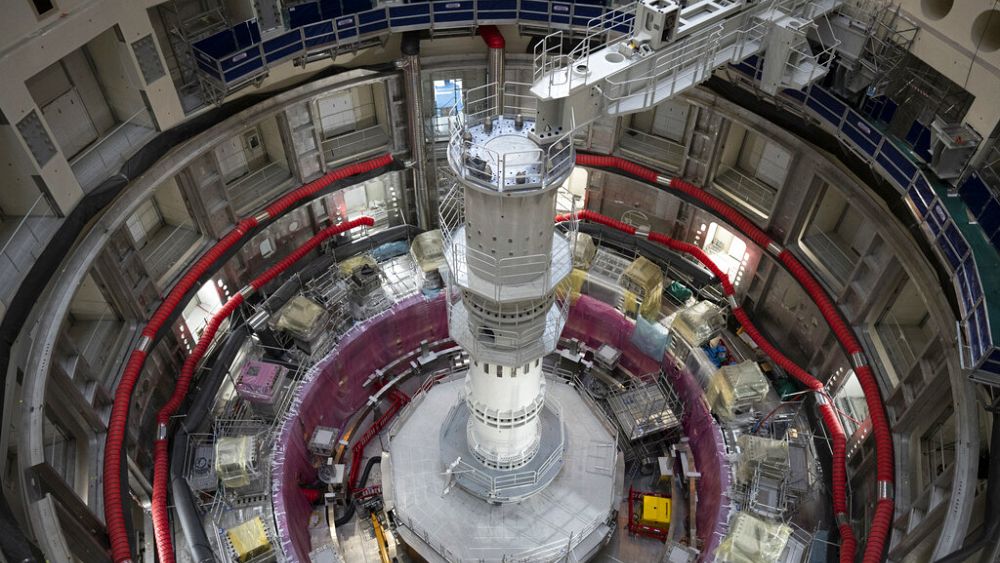The European Union said on Wednesday that European scientists have made a huge breakthrough in practical research on fusion energy. BBC. If we could produce fusion energy to power stars on Earth, we could have a virtually inexhaustible low-carbon, low-radioactive energy source that could replace the energy sources we currently use.
British research laboratory JET broke its previous record this week after it was able to combine the two forms of hydrogen to produce fusion energy. The experiment produced 59 megajoules (11 megawatts) of power, more than double the 1997 lab results.
It is a fact that the energy required to heat a sixty kettle does not seem like much at first, but the significance of the experience does not lie in this either. This big announcement is justified by the fact that it turns out that the materials used in the experiment will stand out in a real fusion power plant. This is very important because the world’s first fusion power plant, ITER, has been under construction in southern France for years.
What is ITER and how does fusion energy work?
The ITER plant is located in the south of France and is supported by many governments from the European Union to the Americans, Chinese and Russians. It is hoped that the operation of ITER will prove that fusion energy can be a reliable source of energy in the second half of the century. If that works, in the future, power plants can be built that emit no harmful substances and produce very little radioactive waste with a short half-life.
A fusion power plant is based on the principle of releasing energy by merging (merging) two nuclei. This is the exact opposite of the nuclear power plants in use today, where energy is obtained by separating the core. At 10 million °C in the Sun’s core, this fusion is generated by massive gravitational pressure – but because much lower pressures can be expected on Earth, a much higher temperature of about 100 million °C is needed to unite the two nuclei.
The problem is that, as far as we know, no material can withstand this temperature in the long term. So the scientists decided to use a superheated gas, “plasma”, to achieve fusion and try to fuse it into a magnetic field in the shape of a circular cake – and the experiment was successful.
“It is a milestone because we have demonstrated that plasma can be maintained stably in practice for at least five seconds,” said lead researcher Dr. Joe Milnes, under which energy is produced. “
He explains that five seconds may seem short to ordinary people, but under lab conditions, that’s the maximum time copper electromagnets can withstand without overheating. “It doesn’t sound like very long, but it’s still a very, very long time in nuclear timescales. Hence, it’s very easy to get five minutes, five hours, or even more than five seconds.” In addition, magnets made of superconductors will not be used in ITER.
Another difficulty is that fusion experiments consume more power than they currently produce—in current JET research, for example, two 500-megawatt devices were needed to produce 11 megawatt-hours. But there is strong evidence that this problem will be easily solved in the future – at ITER, the torque core is ten times greater than in the JET Experimental Laboratory. They very much hope that the French power plant can make a breakthrough in this field as well, and that the power plant will be a net energy producer at full capacity.
It won’t be ready lately
The announcement of the merger is good news, but unfortunately it will not help us in the fight against climate change. This is because fusion power plants are not likely to be ready in the near future. Founded in 1984, JET will be closed after 2023, and ITER just wants to start its plasma trials in 2025. There is a great deal of uncertainty as to when ITER or other future power plants can be commercialized – even the most optimistic estimates are At least twenty years – and it would take decades to build enough stations.
And that’s the problem: because humanity now desperately needs zero-carbon energy. Several EU countries and the EU itself have set targets for 2035 and 2050 respectively to achieve full carbon neutrality. However, according to experts, by 2050 fusion power plants will not be ready yet, they may be alternatives for the second half of the century.
Meanwhile, the twentieth century represents precisely the features Most nuclear power plants are obsolete and less able to meet the needs of consumers. Emmanuel Macron, President of France, has the second largest nuclear power plant in the world after the United States It announced in November that it is preparing to build new power plants In the near future. This is only confirmed by the fact that in addition to the planned shutdowns, there were several unexpected cases in January One reactor had to be shut downas their safe operation is no longer guaranteed.
The Germans are constantly shutting down nuclear power plants, and Belgium, Switzerland and Italy have already imported some electricity from their French neighbor. And in order to reduce Russia’s dependence on energy, there will also be a great need for French power plants, then The European Union is likely to give green energy to nuclear energy as well as wind and solar energy.












































